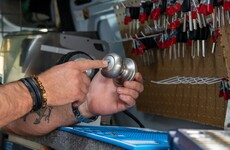Injection molding is a widely used technique for producing plastic items on a large scale. The transition from prototyping to full-scale production represents a critical phase in evolving a product from concept to mass production. This article focuses on the complexities involved in scaling up injection molding manufacturing, particularly highlighting the shift from prototyping to mass production.
Basics of Injection Molding
Before starting the transfer process, grasping the fundamentals of injection molding is crucial. In this method, an injection molding manufacturer melts the plastic resin and injects it into a mold. There, the resin cools and hardens, forming the final product. Achieving accuracy and consistency in part production is vital for the success and efficiency of the injection molding process.
Prototyping in Injection Molding
Purpose and Benefits of Prototyping
Prototyping plays a crucial role in the product development cycle, allowing manufacturers to refine and enhance ideas before proceeding to large-scale production. This stage primarily focuses on identifying and rectifying design flaws, evaluating material properties, and ensuring manufacturability of the product.
The benefits of prototyping are manifold. It accelerates the development process, reduces the risk of costly errors in mass production, and provides an opportunity for optimizing the design. Additionally, prototypes facilitate effective communication between manufacturers and design teams, fostering collaboration and ensuring that the final product meets all specifications.
Types of Materials and Methods Used in Prototyping
Injection molding prototypes, for instance, commonly employ materials such as elastomers, thermosetting plastics, and thermoplastics, each offering unique properties suitable for different applications. Elastomers provide flexibility, thermosetting plastics offer heat resistance and structural integrity, while thermoplastics are valued for their versatility and ease of reshaping.
Design Considerations for Prototyping
In the process of prototyping, especially for projects ranging from large-scale to small-batch injection molding, careful consideration of design elements is critical to ensure the manufacturability of the final product.
Material Selection
Choosing the right material for prototyping is crucial. The selected material should not only be cost-effective for the prototype stage but also possess properties akin to the intended production material. This approach ensures that the prototype accurately reflects the behavior and performance of the final product during functional testing.
Design for Manufacturability (DFM)
Designing with the end production process in mind is vital. Considering factors such as part geometry, undercuts, and mold complexity during prototyping can prevent issues that might arise in mass production. This foresight helps in making the transition from prototype to production smoother and more efficient.
Wall Thickness
Maintaining a consistent wall thickness is essential to avoid defects like sink marks and warping. Prototyping helps identify areas where thickness adjustments are necessary to optimize part performance.
Draft Angles
Incorporating draft angles facilitates easier ejection of the part from the mold. Prototyping allows designers to test and refine these angles, ensuring smooth demolding during production.
Ribs and Gussets
The use of ribs and gussets is evaluated during prototyping to enhance part strength and integrity. Adjustments made at this stage can achieve an optimal balance between weight and strength.
Gates and Runners
Prototyping assists in optimizing gate and runner designs to ensure efficient material flow and reduce issues like air traps and jetting in the final product.
Surface Finish
Assessing surface finish during prototyping helps identify areas needing improvement for both functional and aesthetic purposes. This includes addressing issues like uneven texturing and visible weld lines.
Tolerances
Precision applications often require tight tolerances. Through prototyping, designers can evaluate the achievable tolerances and make the required modifications to satisfy particular needs.
Cost Considerations
The financial implications of design decisions made during the prototyping stage are important to consider. This helps balance the goal of maintaining cost-effectiveness in mass production while achieving the desired product attributes.
Testing and Refinement in Prototyping
Initial Prototype Evaluation
The prototype is thoroughly examined to find any significant design defects or production difficulties. Visual examination and simple functional testing may be part of this step.
Functional Testing
Testing the prototype's functionality guarantees that it operates as expected. This entails evaluating the part's general usefulness, structural integrity, and mechanical qualities.
Dimensional Accuracy
It is essential to compare the dimensional accuracy with the design parameters. With prototyping, modifications can be made to achieve the required dimensions and tolerances.
Material Properties Testing
Evaluation of the material's characteristics, such as tensile strength, impact resistance, and thermal stability, is possible through prototyping. To choose the best material for mass production, this information is essential.
Aesthetic and Surface Finish Evaluation
During the prototype, visual elements including color, texture, and surface finish are assessed. It is possible to fix any flaws or irregularities before mass manufacturing.
Mold Design Optimization
Improvements in mold design can frequently be discovered through prototyping. Changes can be made to improve productivity, shorten cycle times, and streamline the production process as a whole.
Transitioning from Prototyping to Production
Challenges and Strategies in Scaling
Prototype to full production scaling comes with a number of difficulties. Problems including longer manufacturing cycles, more resource consumption, and more stringent cost concerns could occur. Using economies of scale to lower production costs, optimizing tooling, and simplifying processes are some strategies for addressing these obstacles.
Managing the Scale-Up
Careful planning and resource coordination are necessary for scaling up an operation effectively. This entails streamlining manufacturing plans, guaranteeing a sufficient supply of raw materials, and putting in place effective quality control procedures to preserve uniformity.
Role of Project Management and Planning
When moving from prototyping to mass production, project management is essential. To reach production goals and deliver premium products on time, meticulous planning, scheduling, and job coordination are necessary.
Conclusion
Injection molding, moving from prototyping to mass production is a crucial stage that calls for exacting attention to detail. Achieving successful scaling requires taking into account design factors, carrying out exhaustive testing, and putting plans in place to deal with obstacles brought on by higher production volumes. Manufacturers may guarantee the successful and economical production of high-quality plastic parts by accepting the iterative nature of prototyping and implementing the lessons learned into the production process.






